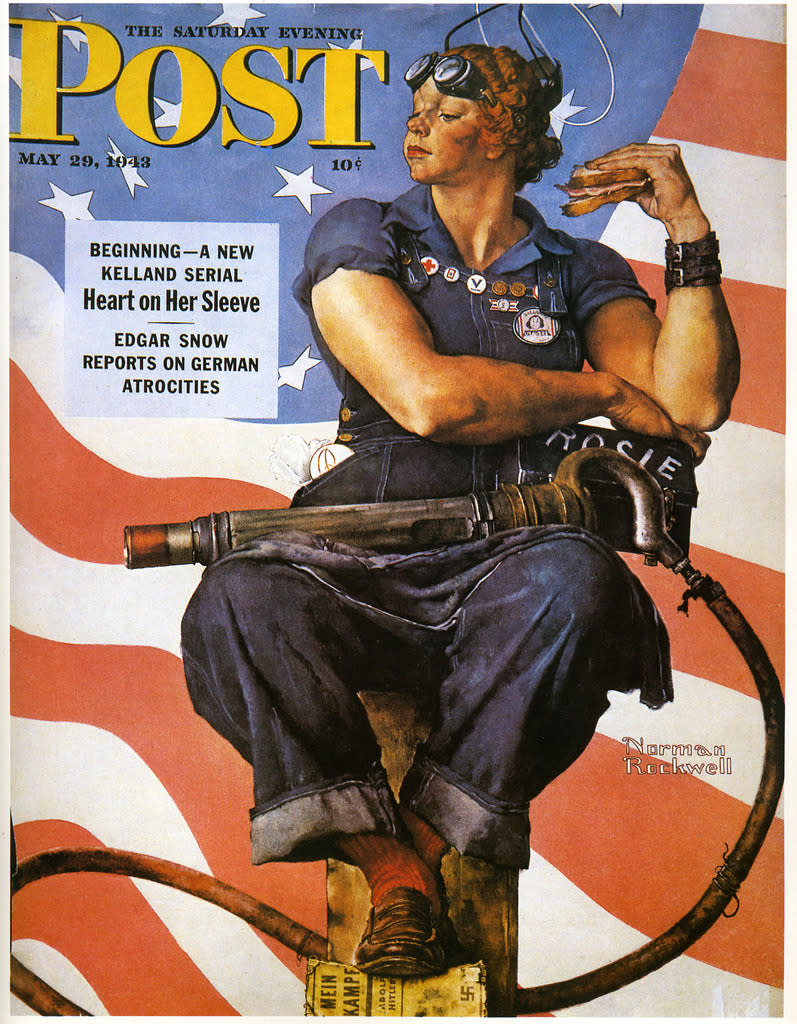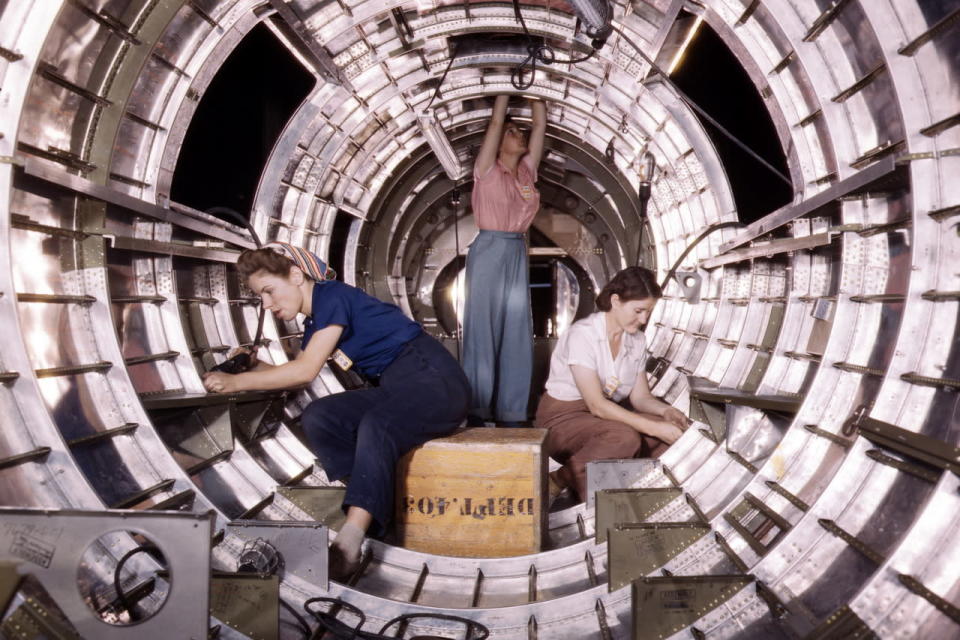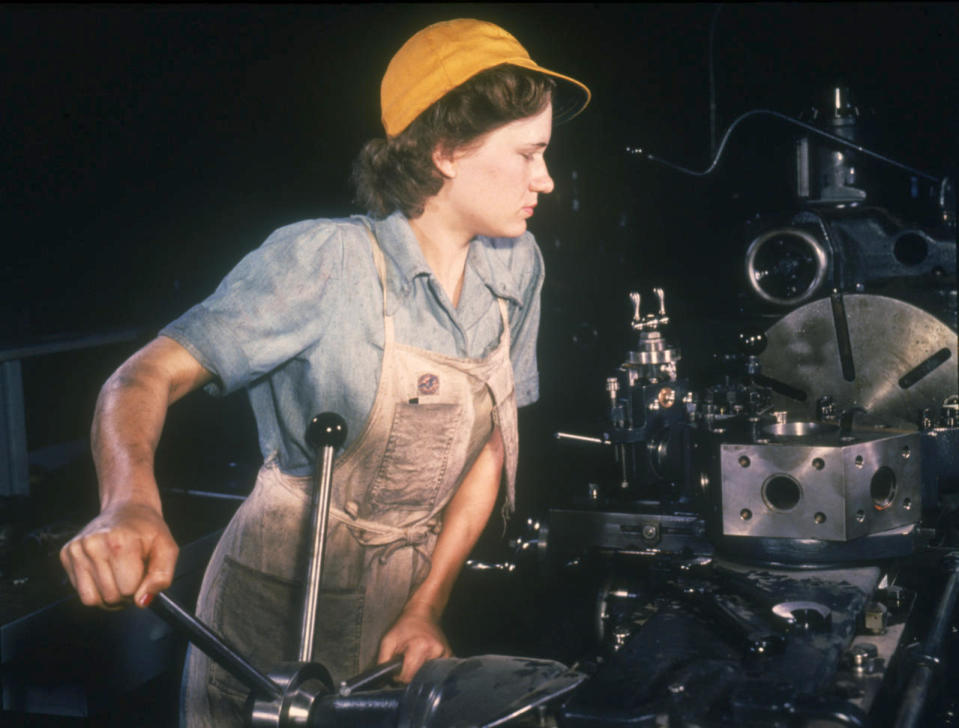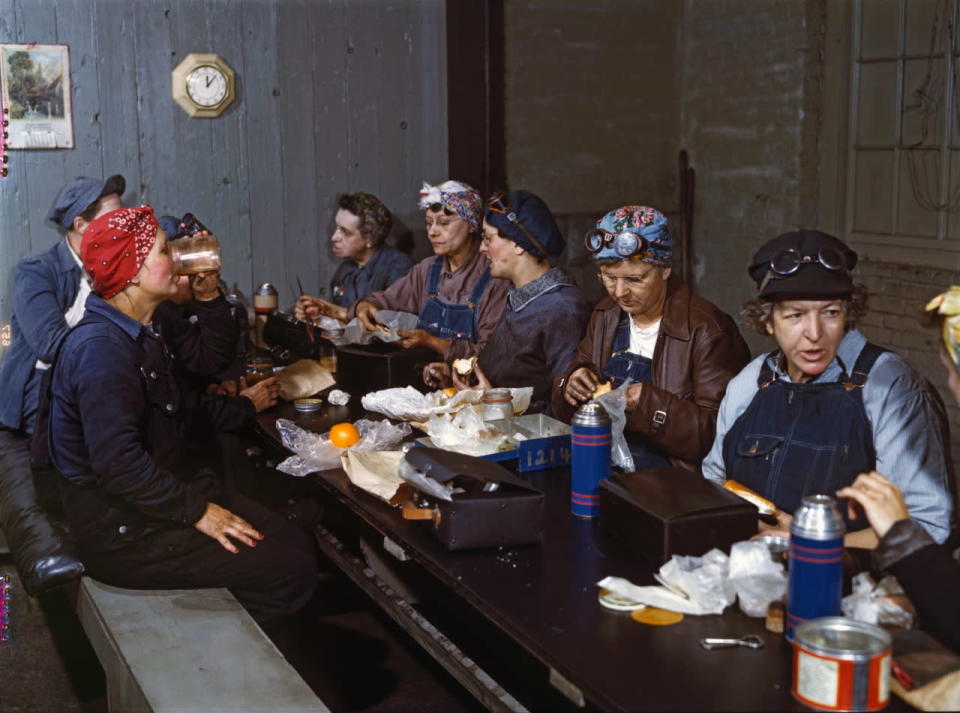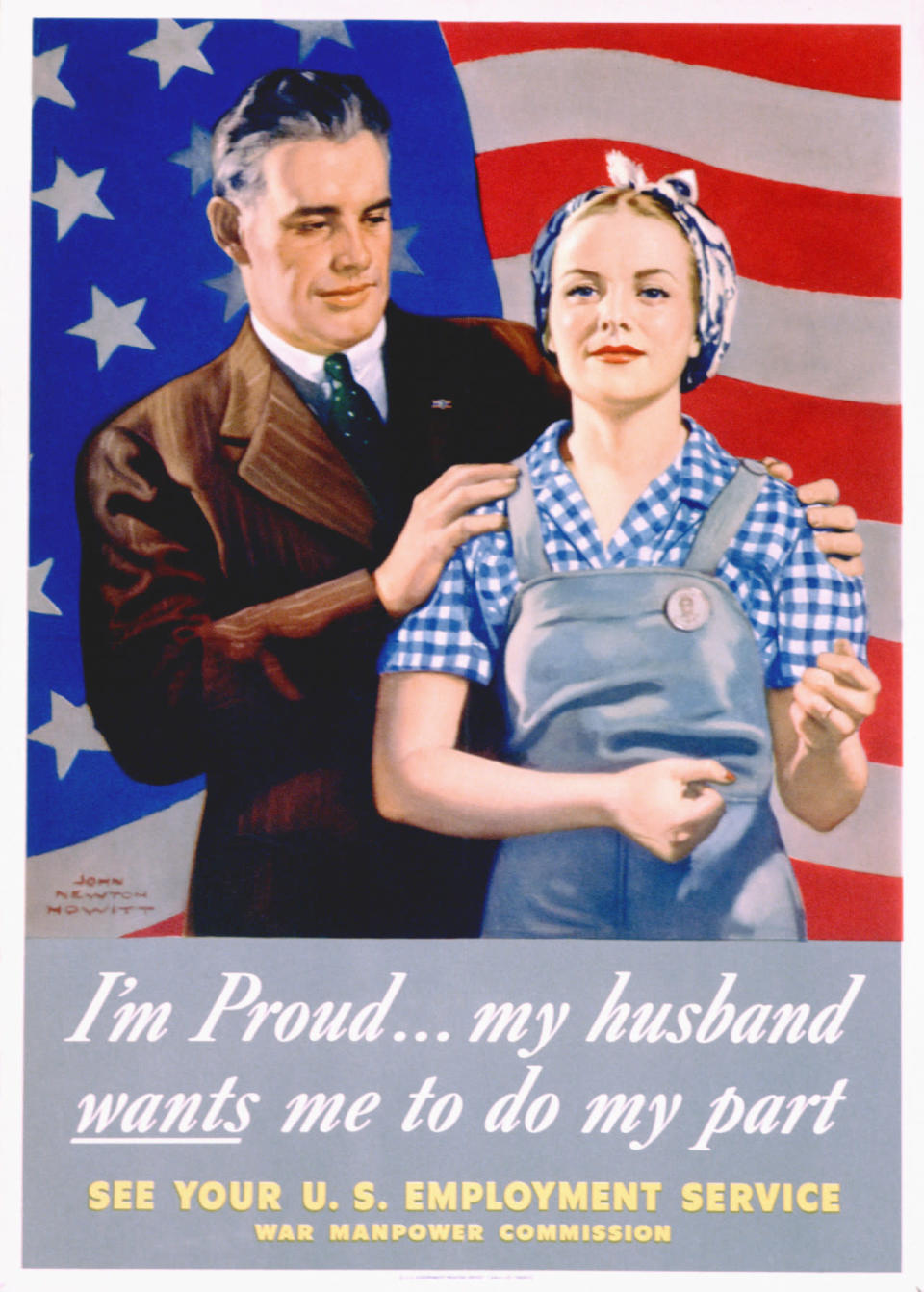#TBT: When Jeans Meant Fashion And Financial Freedom For Women
These days we wear jeans any and everywhere, work and play, day and night. But there was a time not too long ago when wearing denim outside of a cattle ranch was just not done — and those who did were considered pretty rebellious. But World War Two, and the most famous fictional factory worker ever, changed all that.
WWII prompted some pretty major changes in gender roles. Millions of American men were drafted overseas, leaving their jobs vacant, just as production for the war effort was going into overdrive: Wool stopped being made into skirts and hats, and became military uniforms, DuPont went from making pantyhose to parachutes, car factories modified their equipment to churn out B52 bombers. The massive labor shortage meant the U.S. had to convince women, en masse, to go to work at the jobs the men left behind for war.
In a time when women couldn’t open a bank account without a man’s signature, and their main employment opportunities were secretary, nurse, or teacher, women suddenly found themselves welding and riveting in a factories as skilled laborers. These women were given the nickname “Rosie the Riveter” after a popular song of the time about a factory worker named Rosie.
With the new line of work, came a new wardrobe: denim coveralls, overalls, and jeans just like the men, all worn for durability and function. Although denim had made a few appearances on women as a form of novelty dress (especially among elites when cattle-ranch vacations became popular in the ‘30s), for most newly-working women, this was their first time both wearing denim, and having their own income — it was a heady combination of fashion and financial freedom.
However, denim still wasn’t acceptable for women outside the workplace. If women needed to stop by the grocery store after work, before supper, they were expected to go home, change into a dress, fix their hair and make up — transitioning back into the “feminine” role before appearing in public.
But the relative self-determination working women enjoyed during the war was short-lived. When the war ended in 1945, a majority of female factory workers had to give up their jobs to the men who had returned home. Christian Dior’s “New Look” debuted in Paris in 1947 with an accentuated hourglass silhouette, making restricting corsets the norm for the next two decades. In the ‘50’s denim became common as “play clothes” for male children and teens, and for “tomboy” girls. Although Vogue editor Diana Vreeland said “Blue jeans are the most beautiful thing since the gondola” in the early ‘60’s, denim remained associated with workwear, and counterculture groups like bikers and hippies. For women, denim did not truly become socially acceptable until the ‘70’s with the rise of designer denim brands like Gloria Vanderbilt and Calvin Klein.
This week marks 70 years since the end of WWII, and the symbol of Rosie in her blue denim coverall is still one of the most iconic feminist symbols today. In Richmond, California, 800 women gathered to break the Guinness record for the largest gathering of “Rosies” since WWII. Some of the attendees included WWII factory workers in their 90’s wearing their original factory ID badges, of course with their denim — an enduring symbol of the women’s pride in helping the war effort, and of the breakdown of strict gender roles. So next time you wear your jeans to a nightclub, a restaurant, or even a job interview, thank a Rosie!
Follow us on Facebook, Instagram, and Pinterest for nonstop inspiration delivered fresh to your feed, every day.
